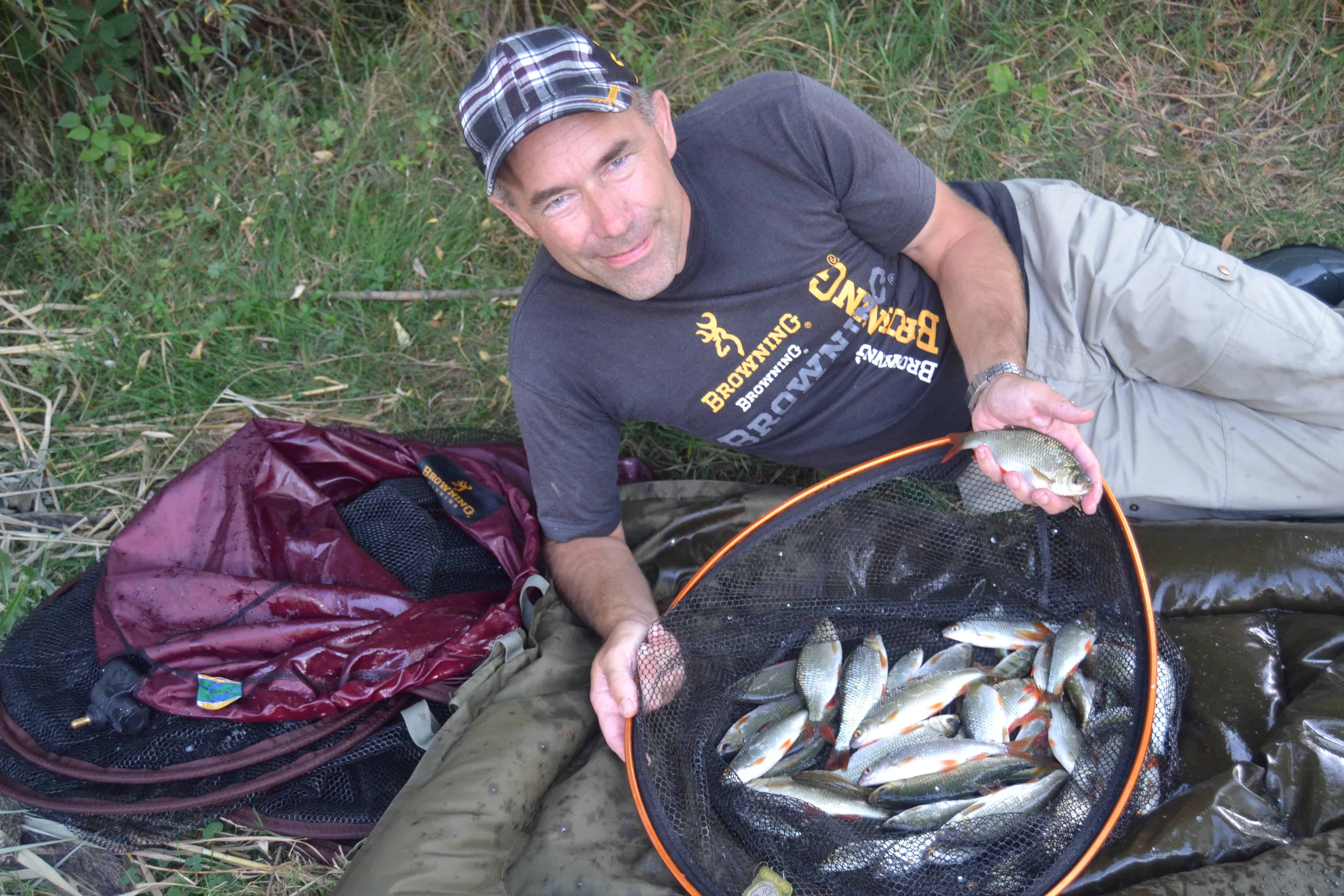
When it comes to classic feeder, I have often had to experience in the past that beginners in particular had wrong ideas about fishing with the feeder. At a spring festival held by a fishing tackle dealer this year, my impression was confirmed. To get to the bottom of these deficits, I have written a guide for all anglers. It is a kind of agenda, or rather a set of tools, so that you are even better prepared and so that even newcomers can find it easier to get started.
Fishing tackle
The heart of any type of fishing is without a doubt the rod. To feed on the river, very heavy and long rods are often required. They have the advantage of being able to throw out heavy baskets. It's easier at a club lake. As a rule, distances of 20 to 50 meters are fished. Neither heavy long-cast rods nor costly long-cast reels are required for this. A light feeder rod with a length of 3,20 to 4 meters and a casting weight of 80 grams is sufficient.

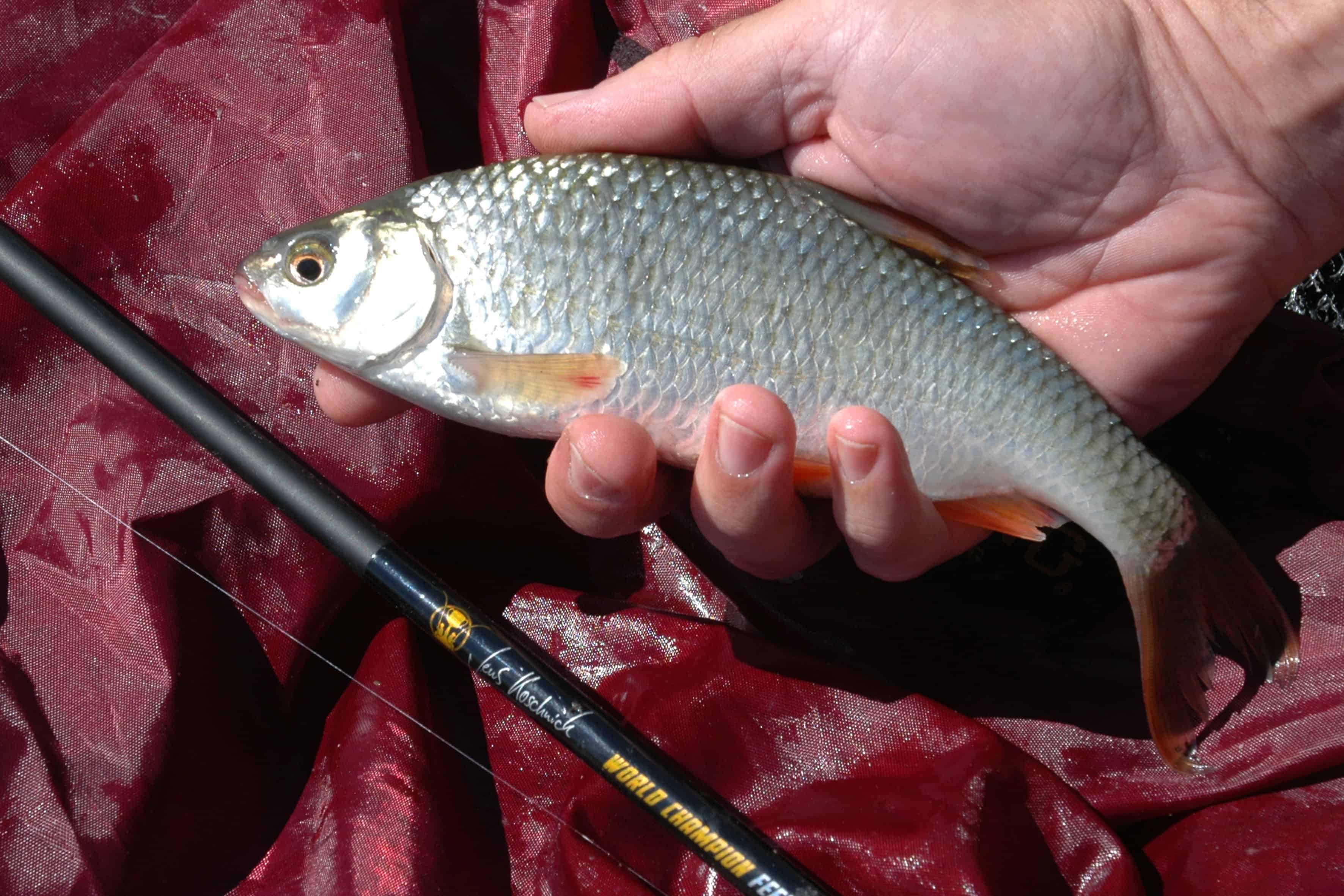
The Browning Jens Koschnick Word Champion Feeder is a productive tool for close distances. Don't be fooled by its delicacy, it can easily handle a real carp too! For a little more power, the Browning Black Viper MK12 is a great option. Even light baskets can be carried over a distance of almost 60 meters. After all, my favorite model by the lake is the Browning Sphere Feeder M, but you have to dig a little deeper into your wallet for this - it is one of the highest quality feeder rods on the market!
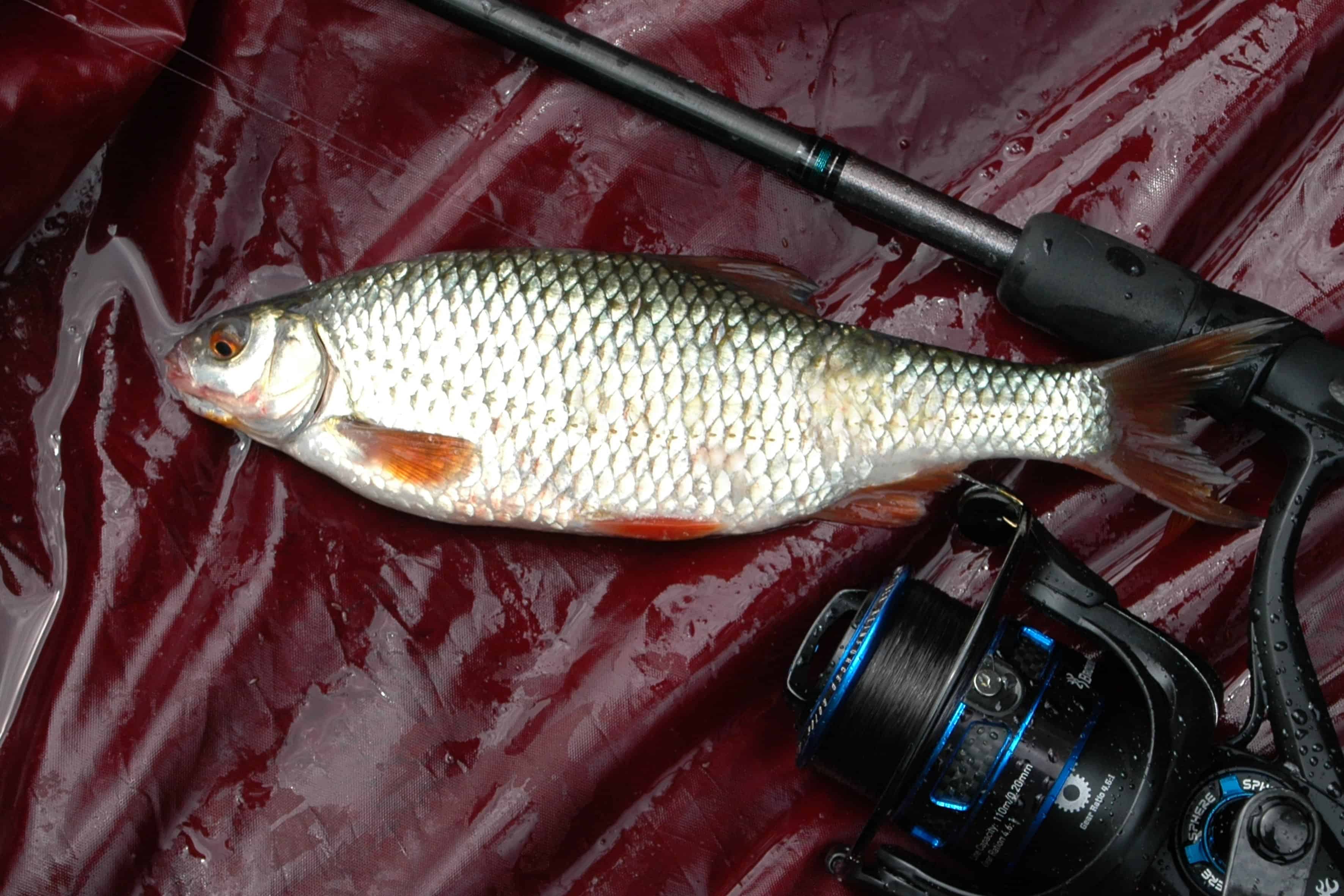
The reel should fit the rod, i.e. not be oversized. Many anglers buy reels with a high draw-in line. This may make sense for long-range fishing, but mostly only short to medium distances are angled. The line pulling in can be neglected. Especially since the leader and assembly tend to twist faster at high retrieval speeds. It is important to pay attention to a sensible and stable gearbox with the reel, as a feeder reel can be heavily loaded. If you have to throw at a distance of more than 70 meters in your body of water, then your device should of course be correspondingly larger and more robust.
A string belongs on a reel. Here, too, I have experimented for many years and prefer monofilament lines for feeding on the lake. I have the following reasons for this:
- With the low-stretch braided lines, I repeatedly had to accept fish losses in the fight. The strikes of the fish are not sufficiently cushioned by the braided lines, especially at short distances, and the fine hook is torn out of the fish's mouth or the thin leader tears.
- On rough ground, the braided line is damaged more quickly than a monofilament. I fish a lot in quarry ponds. Stones and shells adhere to the often steep edges and sooner or later cut off every braid.
- A braid doesn't sink well to the ground. Especially in windy conditions, a string curve can quickly form after being ejected. While trying to eliminate this by constantly tightening the line, the feeder is often moved or a bite is missed.
- The price for braided lines is many times higher.
- Braided lines cause considerable wear and tear on the rod and reel.
Some manufacturers have special monofilament lines for feeder angling in their range. These are effectively characterized by their good sinkability and high abrasion resistance. My recommendation is the Browning brand's Cenex Method Mono.
The feed basket is without a doubt an important component in the device configuration. Many types and sizes are available in stores. Most anglers use the wire baskets with lead slides that are common in many places. Important: Please ensure that you fish as lightly as possible in stagnant water. The weight of the basket should not be heavier than what is needed. In this way you will reach the throwing distance and despite the tension of the line the basket will remain on the bottom of the water.
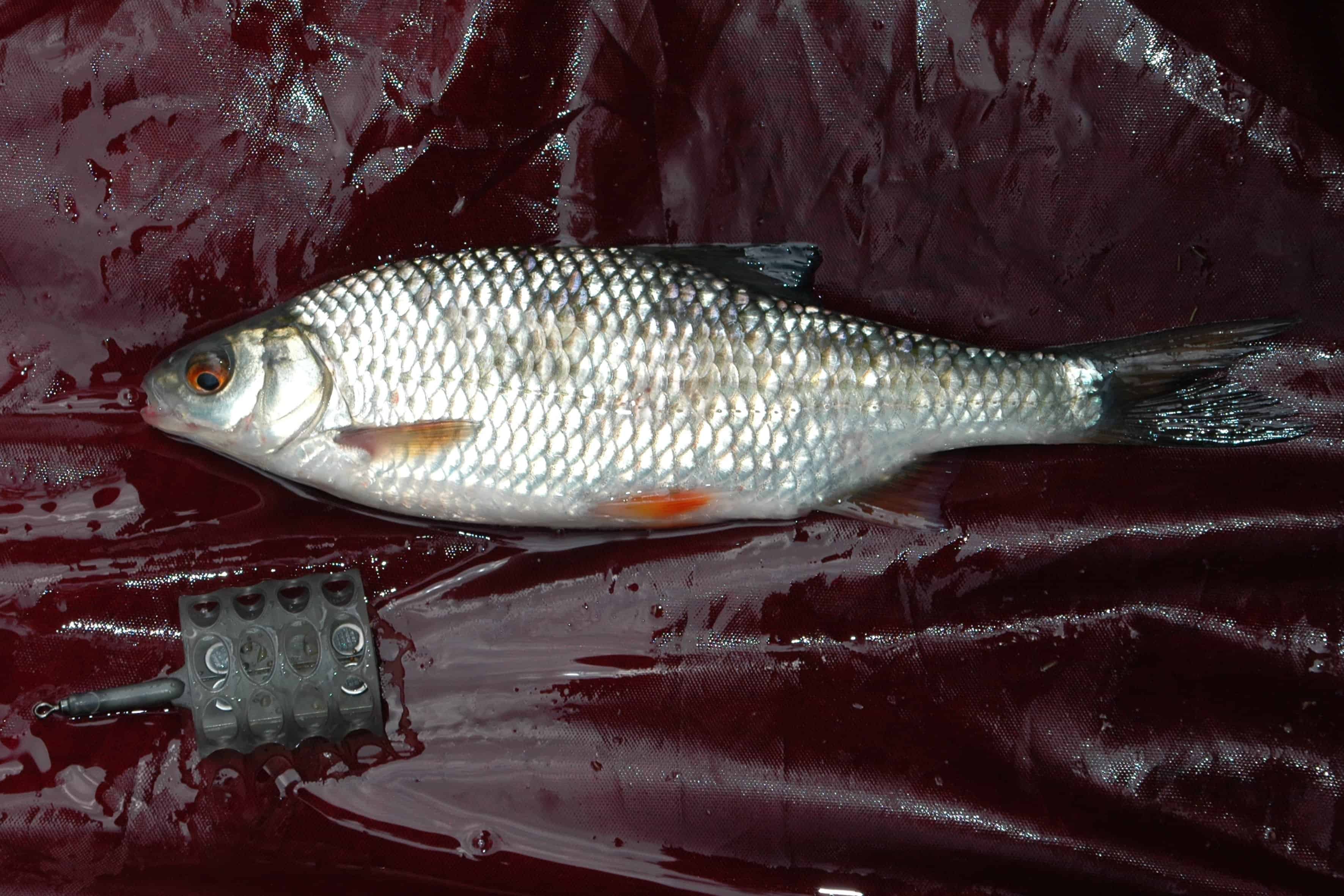
I like to use plastic feeders in the lake, like the Browning Big Pit Feeder. They have two advantages: On the one hand, they do not sink into the mud as quickly and, on the other hand, they detach from the bottom more quickly when being hauled in. A few more words about the hook: Since the feeder usually involves larger fish, the hooks should be stable. Sharp, short-legged models are the first choice.

Technique and tactics
I always try to keep assembly as simple as possible. Again and again, assemblies with side arms, twists or loops are presented in the media. Actually, they are not necessary. On the contrary, they often lead to unnecessary entanglements or, in the worst case, to break the line and that when fighting a big fish. Every knot has a negative effect and is an additional weak point of the assembly. I want it easy, and maybe you too? Then it's best to take the Kosher Rig. This very easy pass-through assembly is available ready-to-use on a 10 meter chalk line. Just tie the knot and off you go!
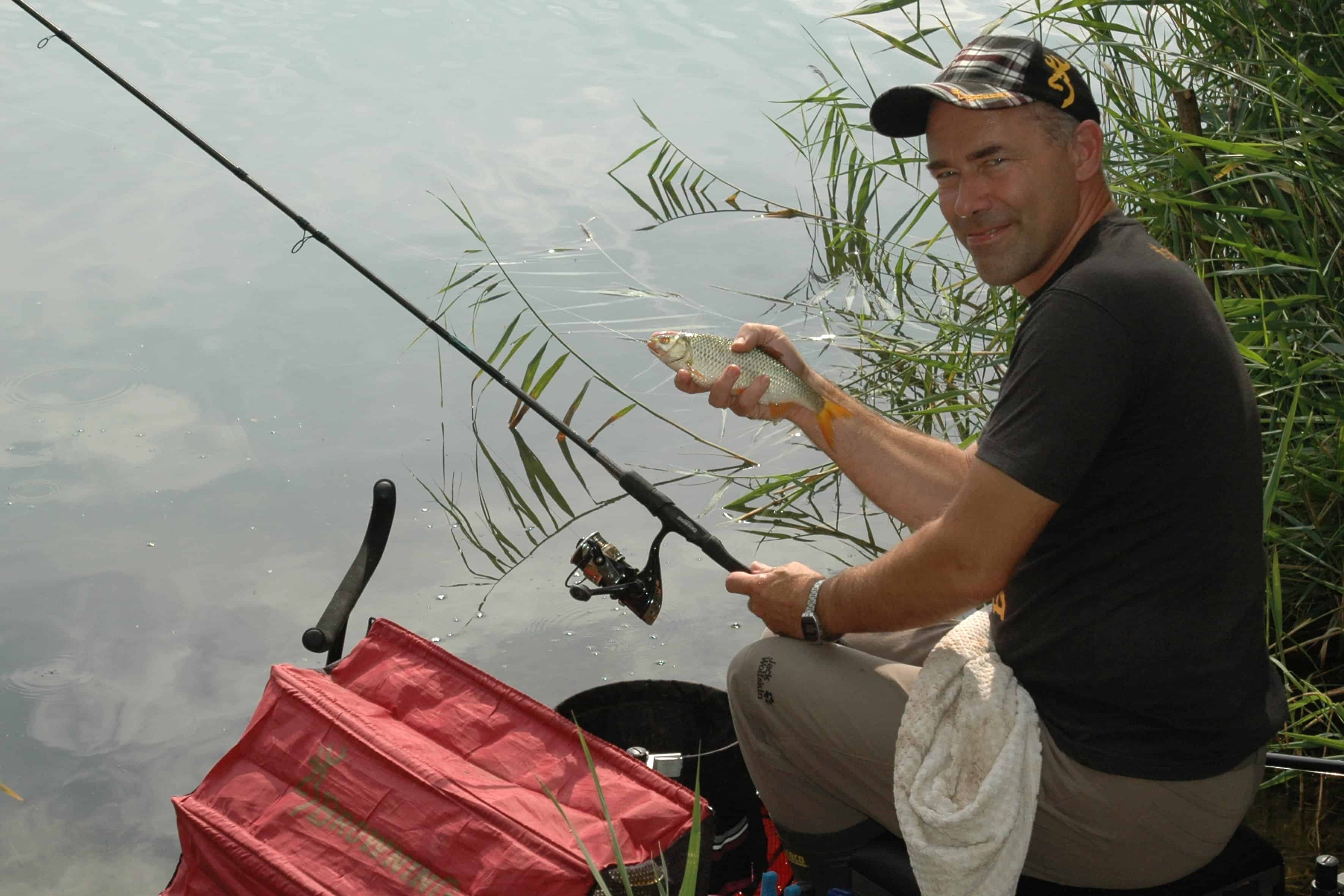
I prefer 80 to 100 centimeters as the standard length for the leader. On the other hand, there are often reservations among fellow fishing enthusiasts. It is believed that the hook could be too far from the basket. Due to the force and speed of the feed basket sinking to the ground, the much lighter hook bait is drawn into the sinking path of the basket and the distance between the bait and the feed basket is seldom excessively large.
Since we keep throwing the same point - with minor deviations - and also feed is released from the basket in the sinking phase, we created a feeding area of two or three square meters after a few litters. Depending on the angler's distance and casting accuracy, it can of course be a few square meters more.
So we can assume that our bait will always come to rest in the padded area, even on the long leader. This gives the fish some space to swim with the bait before encountering resistance. The stop occurs at the first clear sign of a bite on the tip of the feather. If this fails a few times, the leader has to be lengthened. However, if the fish swallow the bait too deeply or if it is eaten without a clear indication of the bite, the leader will be shortened.
Now I would like to talk about the placement of the rod and the seating position of the angler. Again and again I see anglers sitting by the lake, who lay down their feeder rods so that the tip of the rod points towards the sky. This handling is perfectly fine on the river, but please not on the lake. Wind and surface currents make bite detection unnecessarily difficult. To make matters worse, larger fish could be bothered by the string that runs upwards in the area of the feeding area.
The fine tip of the feeder rod belongs just above the surface of the water, preferably at an angle of 45 to 75 degrees to the feeding place. It used to be customary to sit on the side of the bank. Today, many specialists only fish with one rod and place it at an angle of 45 degrees forward. This variant also has some advantages: The angler can see very clearly what is currently happening at the feeding place. If you then place the rod with the handle on your thigh, you are always ready to attack and have fewer problems with disturbing bank vegetation.
Food and bait
Depending on the body of water, the fish population and the time of year, I feed five to ten baskets before I actually start fishing. I almost only apply pure feed with just a few hook baits. Once in the water, food and bait cannot be taken out by us. After the initial feeding, it is advisable to catch up with the assembly every five to ten minutes and to throw the basket filled again on the feeding place.
Once the desired school of fish has arrived, the feeding rhythm is determined by the bites. Now comes the moment when you have to work more with bait in the feed. Depending on the body of water, existing fish species and sizes, we now have to add maggots, casters or cut worms to the feeder with every litter. In general, I do not put the bait in the feed at the beginning of the angling, but only later in the basket as needed. So I can react very well to a changed behavior of the fish at any time. Ideally, hemp and corn are also suitable as additions to the basket. Hemp in particular is greatly underestimated in Germany. The small grains attract the fish very well and keep them in place for a long time. Hemp is often dismissed as roach food, but bream and carp love it at least as much.
I don't keep a secret about my food. I have three ready-made feeds from the Browning Dutch Danger series for different areas of application, which you simply take out of the bag and moisten. My favorite for summer fishing when the predators are eating well is the Stillwater Surprise. The many particles in it also keep larger fish in place longer.
My fished waters have one thing in common: They are clear, have a dark subsoil and the fish are very shy due to the fishing pressure. The "Black Monster" is made for such waters. It smells sweet, but has a not too intrusive aroma, a dark color and, last but not least, visually very conspicuous small particles that make the food an all-round weapon, whether for roach or bream. The "Spicy Thunder" is also always worth a try. My tip when things get a little difficult. Even then, this food often brings one or the other fish to the line. I like to use it in late summer and into winter.
Now I hope that with this post I have been able to give you a number of tips and suggestions on classic feeder fishing. And possibly having opened the first door for newbies.
Get started right away - the best time to fish for feeder is always now.
Enjoy!
Thomas Rimple

 German
German







